
Khossrow G.Dehnavi was born in Iran, and moved to Munich /Germany in 1995, and has been living there since then. Ever since he was young, he had been fascinated with his country’s art and culture, such as the colors and patterns of the Persian rugs, which inspired his later art work. Later on, after seeing his extreme interest in art, his father taught him oil painting techniques. In 1983-1984, Khossrow G. Dehnavi attended a school of art emphasizing in classic Persian miniature and Oil painting, with great master (Tajmir Riahi , Zarin Naghsh) in Isfahan city. In 2000, he started to study church painting techniques, and after two years, he achieved his certificate of completion. In 2004, Khossrow G. Dehnavi attended one of the top schools of Art in Munich, Germany, where he received his master degree in church painting and monument care. Since then, he has had many different art shows and galleries in many different cities throughout Germany. Living in Germany has opened a lot of opportunities for him as a painter in order to expand his abilities in art, and has given him the chance to learn and understand a lot about the European modern art. In the beginning, Khossrow G. Dehnavi started painting classical and realistic, and a few year later Persian miniatures. The light and the sun were very important aspects for him, and always fascinated him, therefore you can find and see the importance of those two aspects in his paintings. In the time which he lived in Europe, the modern art, especially abstract and experiential painting fascinated him, and influenced his work a lot. His paintings have a theme and tell something about the people and the society. In his paintings you can see the importance of light and particularly powerful and vibrant colors, with a strong contrast between them.

Biography
Khossrow G.Dehnavi was born in Iran, and moved to Munich /Germany in 1995, and has been living there since then. Ever since he was young, he had been fascinated with his country’s art and culture, such as the colors and patterns of the Persian rugs, which inspired his later art work. Later on, after seeing his extreme interest in art, his father taught him oil painting techniques. In 1983-1984, Khossrow G. Dehnavi attended a school of art emphasizing in classic Persian miniature and Oil painting, with great master (Tajmir Riahi , Zarin Naghsh) in Isfahan city. In 2000, he started to study church painting techniques, and after two years, he achieved his certificate of completion. In 2004, Khossrow G. Dehnavi attended one of the top schools of Art in Munich, Germany, where he received his master degree in church painting and monument care. Since then, he has had many different art shows and galleries in many different cities throughout Germany. Living in Germany has opened a lot of opportunities for him as a painter in order to expand his abilities in art, and has given him the chance to learn and understand a lot about the European modern art. In the beginning, Khossrow G. Dehnavi started painting classical and realistic, and a few year later Persian miniatures. The light and the sun were very important aspects for him, and always fascinated him, therefore you can find and see the importance of those two aspects in his paintings. In the time which he lived in Europe, the modern art, especially abstract and experiential painting fascinated him, and influenced his work a lot. His paintings have a theme and tell something about the people and the society. In his paintings you can see the importance of light and particularly powerful and vibrant colors, with a strong contrast between them.

Education
1983-1984 2 years training at school in Oil painting and Persian Miniature with great master, Tajmir Riahi and Zarin naghsh in Isfahan-Iran.
2000-2002 2 years training at school of color and design in Munich-Germany with certificate in church painting.
2005- Master Craftsman diploma of church painting and preservation of monuments in Munich Germany.
Solo exhibition:
2006- Ebersberg, town hall-Germany
2006- Puchheim, town hall-Germany
2005- Stuttgart, City library-Germany
2004- Grübenzell, town hall -Germany
2003- Gallery K24 Munich-Germany
Community exhibition:
2017- art society, Ebersberg-Germany
2004- art society, Aichach-Germany
2004- art society, Olching-Germany
2003- art society, Aichach-Germany
1984- Teheran festival of art,Teheran-Iran
Discover masterpieces by Khossrow G. Dehnavi.
Be inspired by unique and high- quality Faux painting in perfect execution.
Trompe l’ oeil (illusion Painting)
Faux, as many know by now, means “fake” in the French language. When used in faux finishes it means to imitate a resource. The Romans incorporated faux finishes into many of their frescoes. Faux finishes have a lot of use in today’s interiors: they create depth, atmosphere, and are the perfect backdrop for fine furniture and other items. Faux finishes can range from leather imitation to self invented creations which rival the finest of wall covering on the market.
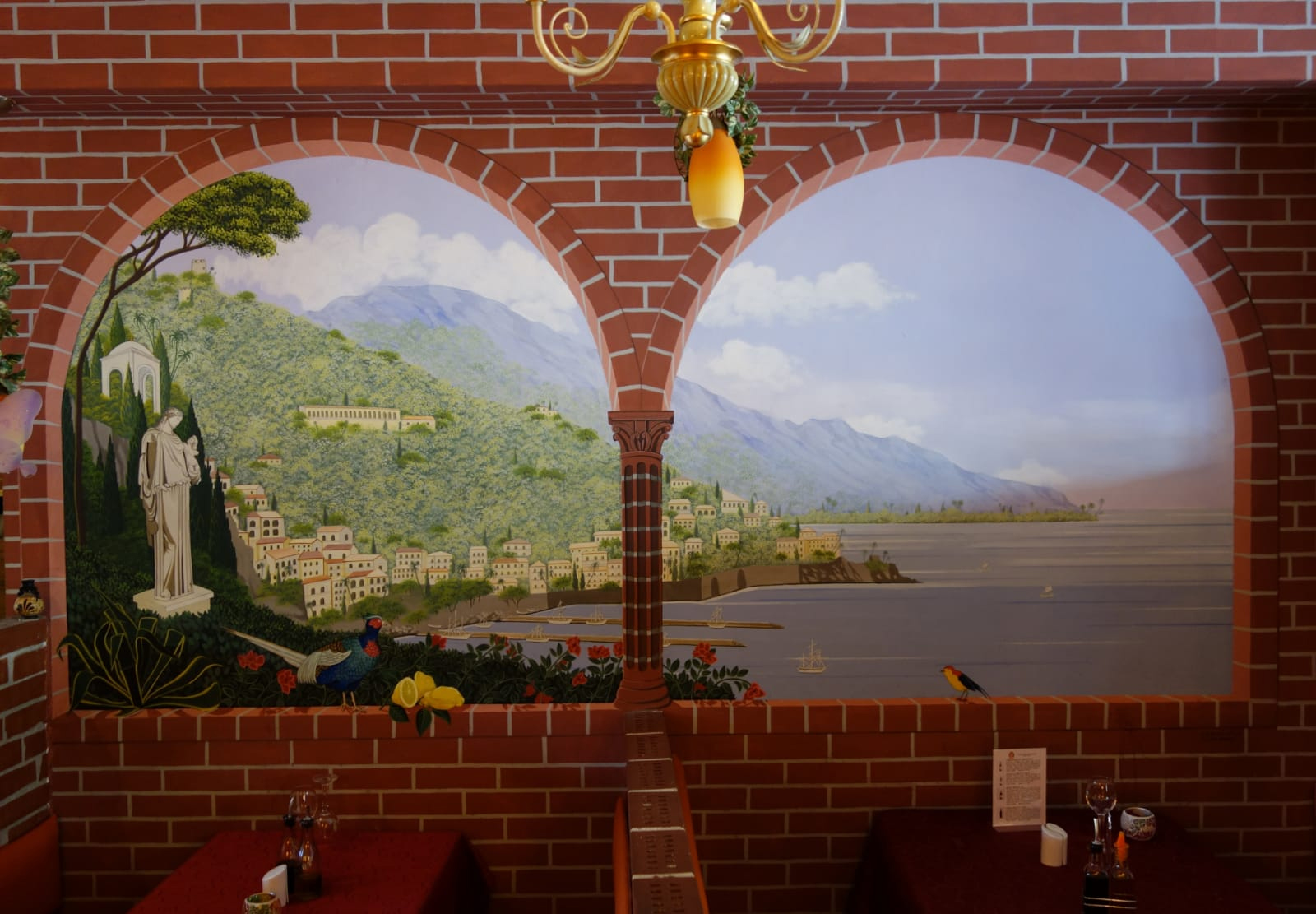
Decorative painting and mural by Khossrow G. Dehnavi, always brings a special atmosphere where people want to feel comfortable.
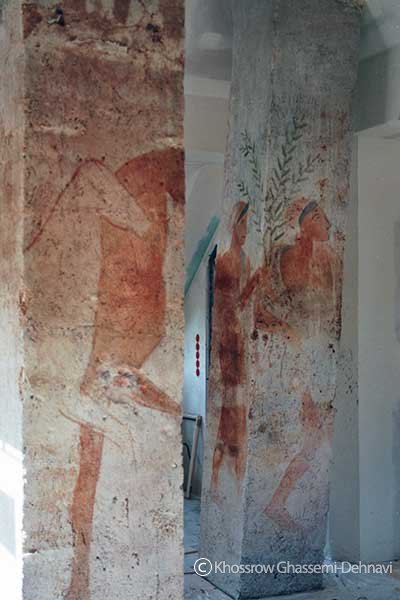
Etruscan wall painting
Here are two old fireplaces, about 100 years old each, which have become dirty over time. (Oil and soot stains). The whole plaster was dark and yellow on the surface. The storage room was not used for years and only expanded in 2006 in order to be prepared for living. The client wanted to preserve the two chimneys in their original form, but wanted to also present them as a decorative shape in the middle of the room. That’s why I painted them with motifs and figures from the Etruscan time. We have carefully cleaned the surface of the plaster, the big holes, and repaired the damaged places. The Approaches to the ceiling was also retouched. Subsequently, work was done with glaze technique and painting.
Pompeian wall painting
This is a new house, which was built two years ago. The client wanted a wall in the living room and a wall in the kitchen in glaze technique with motifs from antiquity. (Pompeian mural painting) But at the same time, the effect should be achieved by an old mural painting. The operation consists of several glaze layers and abraded plaster and hairline cracks, which are horizontal, vertical, short, and have deep cracks that are long.

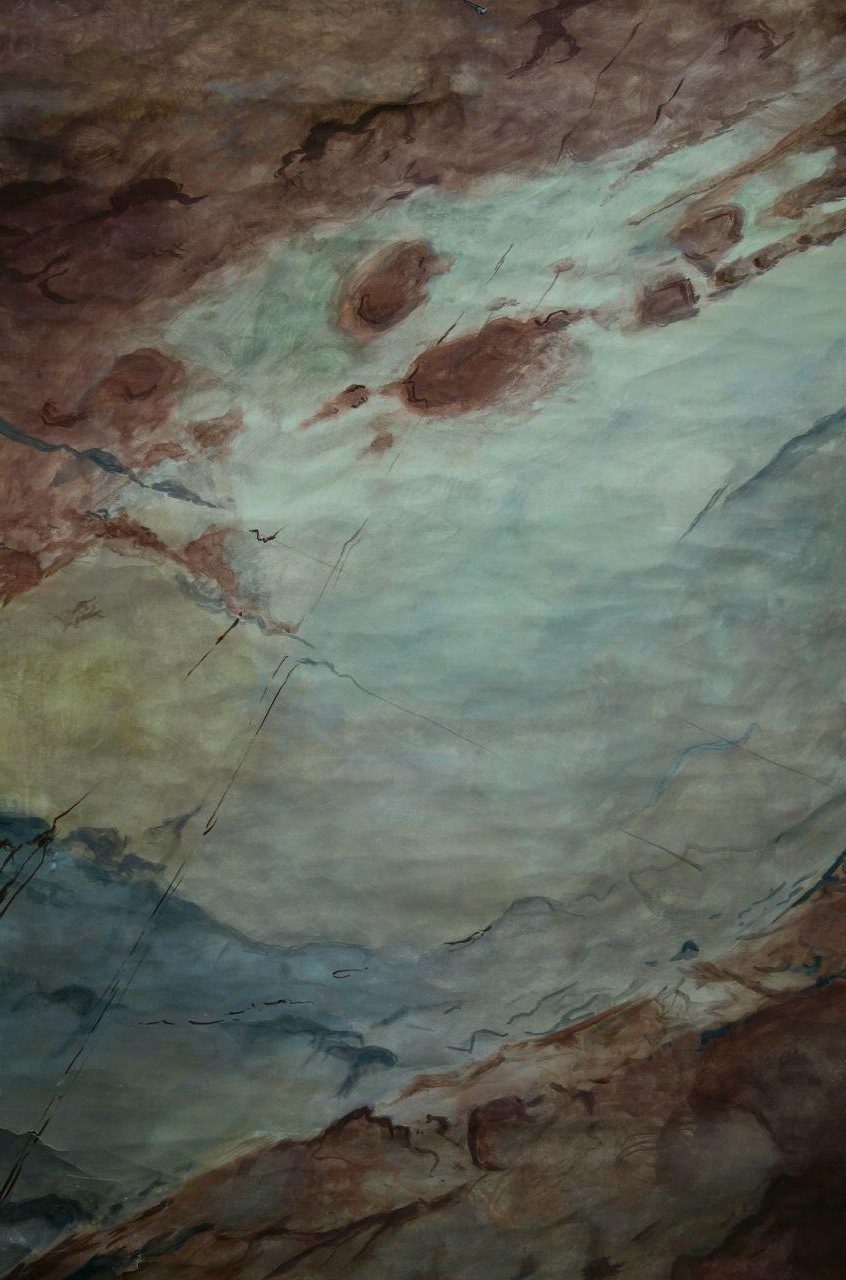
marbling (marble Imitation)
Faux marbling and faux woodgraining also fits into the category of faux finishes. An age old craft, its purpose is to mimic natural elements which would normally be too heavy or expensive for practical use, Faux marble and faux wood can be painted to match existing elements of an area, or to give a lesser valued item an expensive look. The color and style of the faux finish can be custom matched to meet the needs of the project.
The decorative presentation of coulors, textures and the sparkling of natural stones, especially marble, is part of the creative works of interior design since time immerorial, especially in baroque and Baroque Revival. A dominating role in the gorgeous designed rooms of baroque played marble based pilaster, pillars, cornices and wall decorations. Since marble wasn’t always available, several techniques, as to mention scagliola were developed and in great usage as early as the andent Roman architecture.
wood imitation
The wood painting (wood imitation) is a technique with which the most diverse types of wood can be imitated deceptively real. In the execution of the wood painting one speaks of glazing, spading or graining. The glaze technique can be used almost indefinitely, this form of technique greatly emphasizes on variety of color creations portrayed on walls and furniture, of restoration, and of reorganization. Several clear color layers lie about each other, they exist of pigments lightproof and binding agent. Thus, transparency and light permeability are guaranteed.

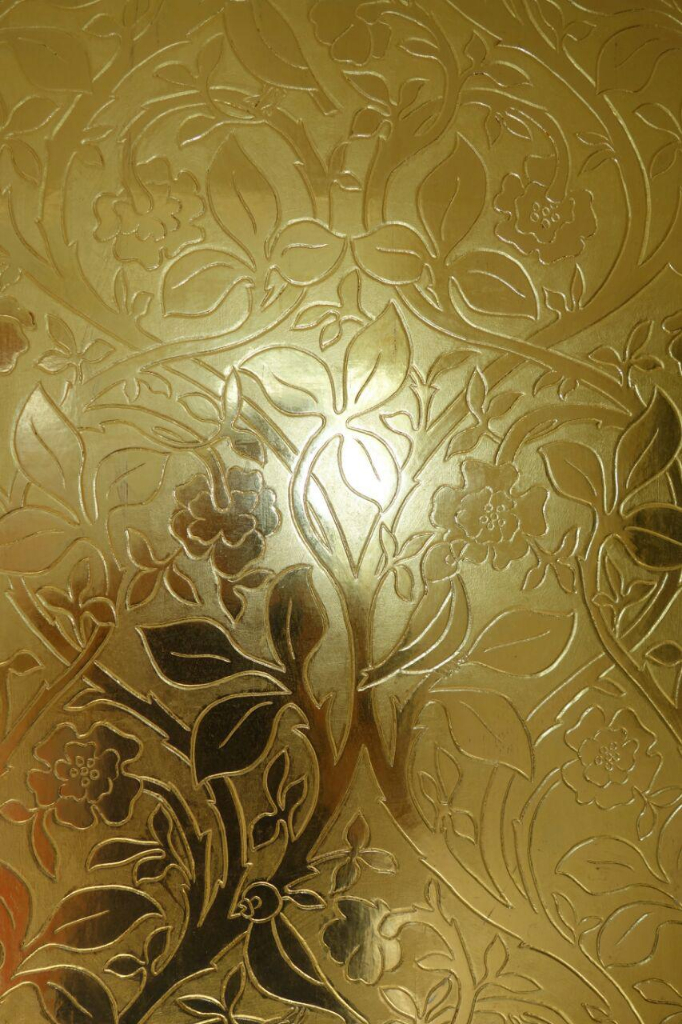
gilding
Gilding is the technique of applying gold or other metals on a surface, or the practice of overlaying and covering with a gold leaf, and also a thin coating or wash of gold, or of that resembling gold. The surfaces of wood, stone, and plaster sculpture can be decorated with gold, silver, and other metals that are applied in leaf or powder form over suitable priming. Some of the most impressive examples of gilding are found in ancient manuscripts such as the Book of Kells. It is a very old art, which has changed very little since the 8th or 9th century when such manuscripts were frequently created.
Faux Finish and painted furniture
Painted furniture dates back to the medieval times. The Germans were particularly known for their (Bauernmalerei) Folk art painting, which was decorated with small flowers, birds, and other ornaments. Painted furniture must always be durable, so it can withstand everyday use. The opportunity to introduce color is great, as the painting is “framed” by the piece itself.
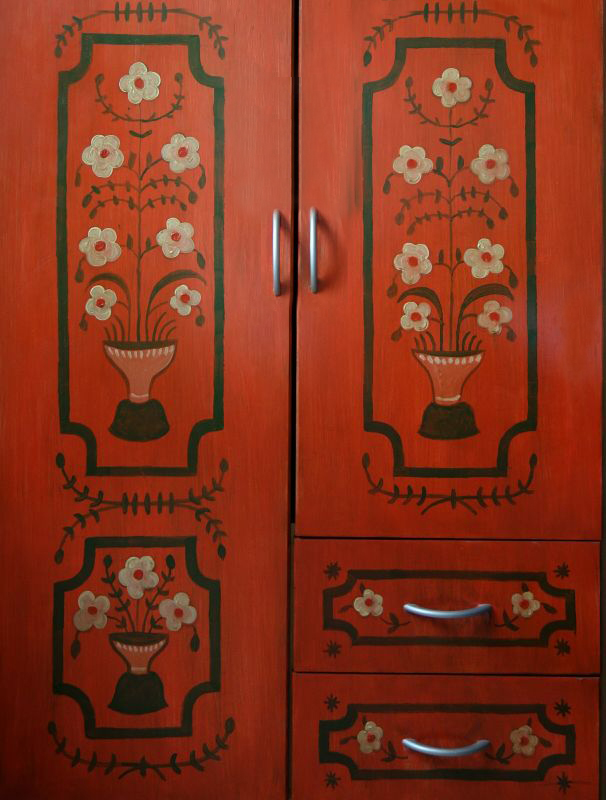

grey painting
glass painting

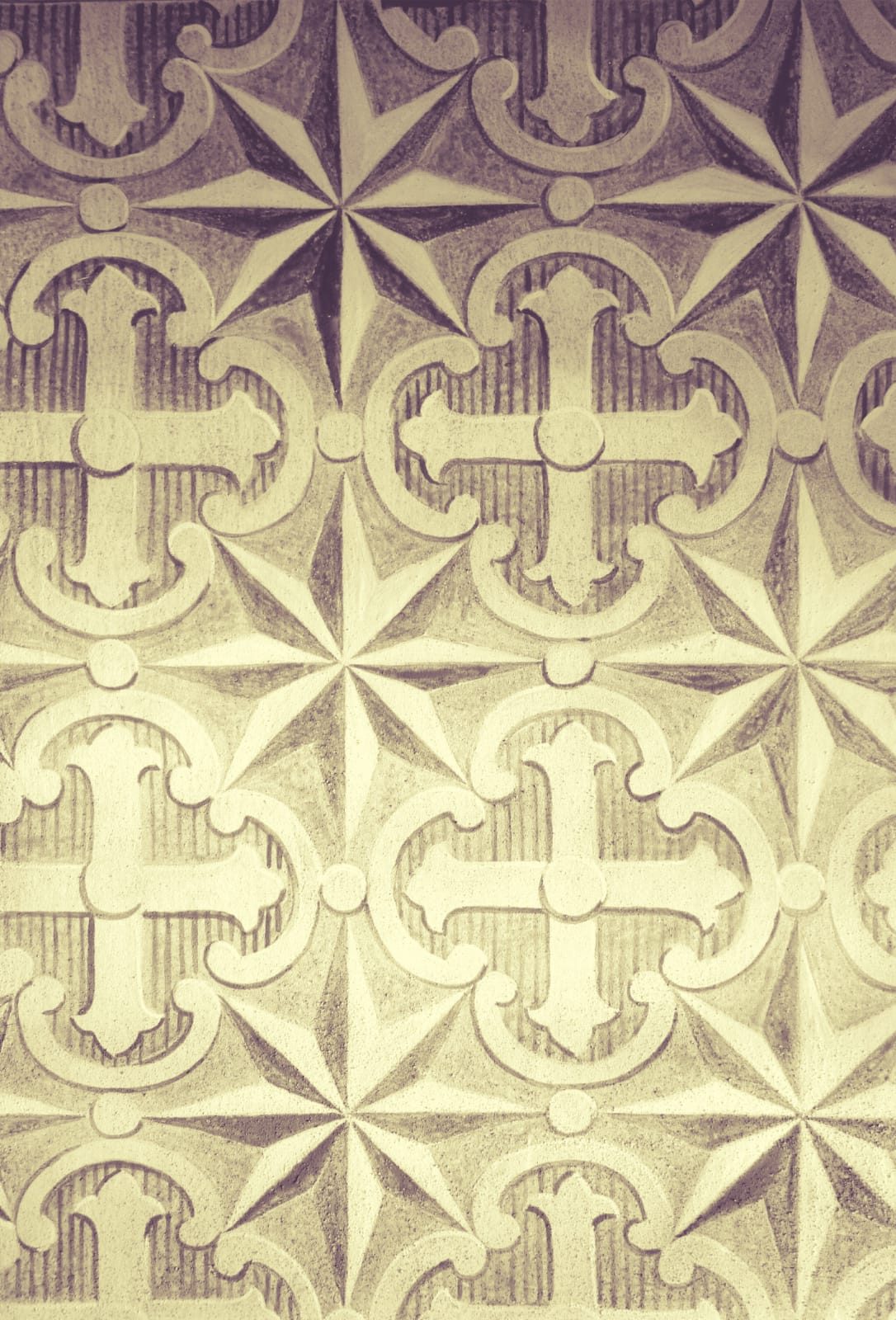
brocade (Textil Imitation)
Let yourself be fascinated by old historical techniques by Khossrow G. Dehnavi.
He does all his painting where necessary on biological, mineral materials such as glue and silicate paint.

Sculpture Painting
According to Grimm’s German dictionary of 1862, the old German word “Fassen,” means “to dress,” in other words, to bind or cover an object with metal and paint. Fassen is not immediate “paint” but an imitation of materiality, and an increase in form and plasticity of an object by color.
The figure was a plaster cast of the “Black Madonna” of Altötting. Many places on the figure were broken due to franking the figure. Therefore, we first had to glue the broken parts, and then repair the defects. The face had to be properly engraved and cemented. The version was painted with egg tempera. All the different techniques are done in matte and glossy gold.
Monument care (Restoration)
The house was built in around 1895. It is under monument protection. Today, the house is used as a seminar place. The walls in the living room and dining room were dirty due to smoke and grease. So, the original colors looked dark gray and dark yellow. The builder initially wanted a new coat of paint. But we decided it was better to preserve the original colors, the walls only get rid of dirt and grease. That’s why we cleaned them. Due to the slight abrasion of the surface, the paint layer also received a deep effect. In order to bring out the walls better, I marbled the pedestal.

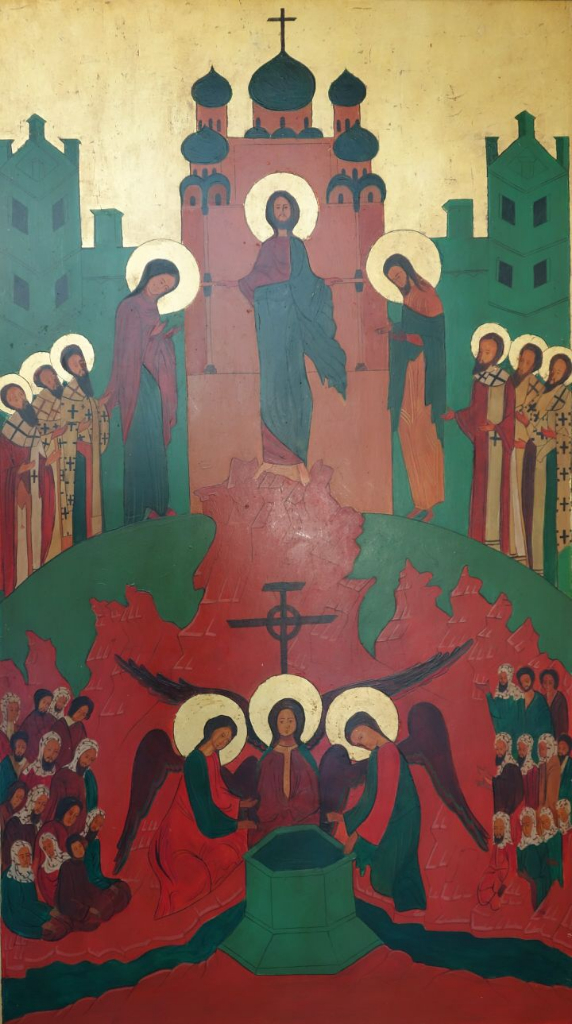
Icon
White Polish (Porcelain Imitation)
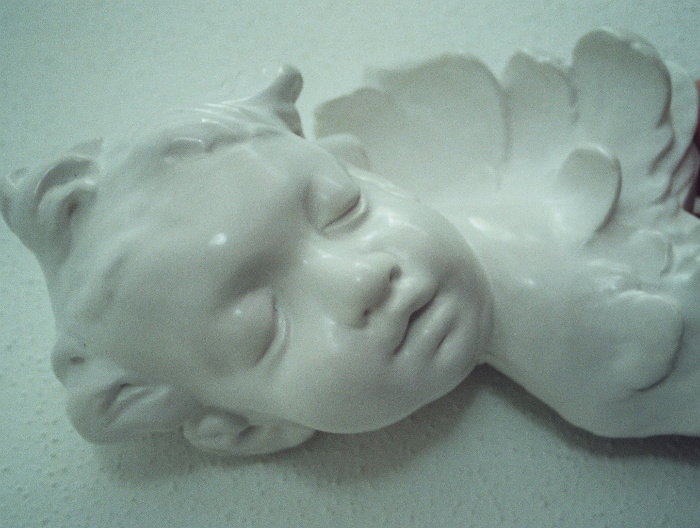
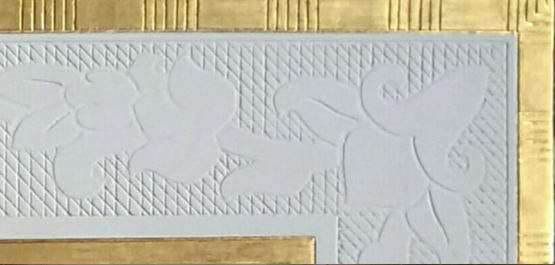
engraving
Poliment Version

